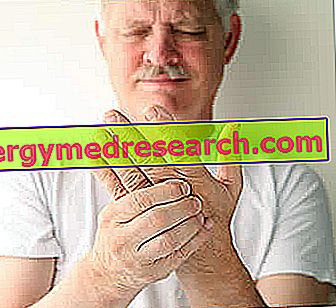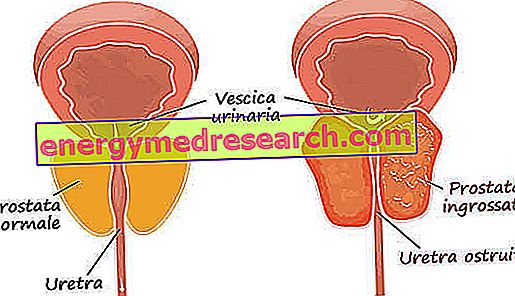What is dysesthesia
Dysestesia is a noun that derives from the Greek words "dis", which means "abnormal" and "aesthesis", meaning "sensation"; the meaning of dysesthesia is "abnormal sensation".

Dysesthesia is caused by lesions affecting the nervous system, both peripheral and central. The various forms of dysesthesia can affect the tissues of any body district, including the most frequent ones of the mouth, scalp, skin and legs.
In some cases, it has been described as a subcutaneous acid sensation. This dysaestic burning may specifically reflect a state of acidosis of the synapses and perineural space. Not by chance, in the presence of some nerve lesions, with the lowering of the pH, certain ionic channels tend to open. Spontaneous discharge of pain receptors has also been implicated as a potential cause of dysesthesia.
Patients with dysesthesia may become unable to feel pain without any apparent damage to the skin or tissues. Some suffer from psychological disorders.
Living with dysesthesia
A patient suffering from dysesthesia may have to endure a very painful condition.
The suffering imparted by the dysesthesia with burning is called "Dante", referring to the description by the author in the "Divine Comedy" (classical literature).
Changes in temperature and heat, as well as rubbing, contact with rough surfaces or even just the touch of the skin, influence the nervous perception and increase the level of pain.
Often, the patient is unable to withstand even the touch of clothing. Life focuses on trying to avoid or reduce the perception of pain. One of the greatest difficulties is that of resting and sleeping, due to the contact between the clothing or the sheets on the skin.
Sometimes, patients are induced into a hysterical search for relief from pain, which often ends with resignation and depressive symptoms.
Forms of chronic anxiety and tingling of the face are frequently associated with dysesthesia. In a specific study, the patients examined had in common: anxiety symptoms, depression, obsessive-compulsive personality disorders or somatoform disorders.
Is there a cure?
Both physical and oral muscular and pharmacological therapy with antidepressants are effective treatments for occlusal dysesthesia. Absolutely to avoid the correction or replacement or removal of pre-existing dental work, despite the perception of an urgent need.
Antidepressants are sometimes prescribed even in cases of dysesthesia affecting the scalp.
A study has shown that many patients suffering from "Burning Mouth Syndrome" (BMS), or the so-called "burning mouth syndrome" (a variant of occlusal dysesthesia) report painful sensations in other parts of the body. Some show a comorbidity with the "Restless Leg Syndrome" (RLS), or "restless legs syndrome", and 50% said they had at least one case in the family. The results suggest that some symptoms of BMS may be caused by the same nerve pathway as the RLS, indicating that dopaminergic drugs regularly used for the treatment of RLS could be equally effective.
Types
The dysesthesia can be described as a class of neurological disorders and classified according to the body district or the type of sensation evoked.
Skin dysesthesia is characterized by discomfort or pain from contact to the skin in the presence of normal stimuli, such as those in wearing clothes. Unpleasantness can range from a slight tingling to a disabling pain.
The dysesthesia of the scalp is characterized by pain or burning sensations below the skin surface of the skull. It can also manifest itself as an excessive itching.
Occlusal dysesthesia, or "phantom bite", is characterized by the sensation that the action of the bite leads out of the intended place (occlusal distopia), despite the absence of compromised structures and dental and maxillofacial tissues. Ghost bite often occurs in patients who have undergone dental procedures; at present, there are no known therapeutic treatment systems.
Causes
Dysesthesia can be caused by:
- Diabetes, in which it can be alleviated by using creams containing capsaicin (active ingredient of the chili pepper)
- Guillain-Barré syndrome, an acute form of polyneuritic radiculus manifested by distal-proximal progressive paralysis
- Neuropathy, a set of paresthesias, gait disorders, weakness and absence of tendon reflexes
- Lyme disease in which, together with polyneuropathy, it represents a symptom of infectious nerve damage from genus Barrelia bacteria. Dysesthetic sensations remain even after antibiotic treatment
- Abstinence from alcohol or other drugs, in case of dependence
- Multiple sclerosis, as an effect of medullary lesions
- Oral surgery, in occlusal dysesthesia
- GM2 gangliosidosis or variant B of Tay-Sachs disease, attributable to the enzyme exoxaminase A deficiency and ganglioside accumulation
- Peripheral neuropathy of the hands, feet and sometimes of the arms and legs, induced by chemotherapy
- Stroke involving the nuclei of the posterolateral ventral thalamus, especially in the Dejerine-Roussy syndrome.
recognize it
Most individuals with dysesthesia or phantom limb syndrome (SAF) also experience a sensation of pain. However, the two conditions should not be confused.
In SAF, one has the sensation of having an amputated or absent limb, while the dysesthetic refers to a discomfort or pain for a tissue that has not been removed or amputated, therefore completely intact. Furthermore, the tissue may not be that of a limb, but of another part of the body, such as the abdomen.
Sometimes, dysesthesia may occur concomitantly with phantom limb syndrome in individuals paralyzed or born without limbs. On the other hand, while SAF is caused by improper innervation of the terminations that usually affect the limb, dysesthesia is caused by damage to the nerves themselves.
The dysesthesia should not be confused even with anesthesia, hyperesthesia and paresthesia, which refer to a loss, an excess or a distortion of sensitivity. It is a very distinct picture, as it refers to spontaneous sensations manifested in the absence of stimuli. For example, in the case of a dysesthetic sensation evoked by the touch of clothing, this will be characterized by the irrelevance (for example the burning) and not by the excess, the defect or the tactile distortion.
Last news
Many hypotheses have been advanced on the pathological nature of occlusal dysesthesia.
Some researchers believe that this disorder is exclusively psychological in nature, while others argue that it is psychosomatic.
Others hypothesize that occlusal dysesthesia takes root in some pathological psychiatric settings and suggests that it may occur, following dental treatment, in patients with psychological disorders (such as schizophrenia).
Two studies have shown that occlusal dysesthesia is associated with somatoform disorders in which patients are obsessed with oral sensations.
The hypothesis has been advanced that the occlusal dysesthesia may be caused by the brain in the mechanism of "internal dialogue", which would cause abnormal oral sensations in the absence of external stimuli. According to this theory, the symptoms of dysesthesia are catalyzed by amputation, for example the extraction of a tooth, due to which the brain loses the ability to distinguish memory between the old and the new movement.
Finally, it has been suggested that occlusive dysesthesia may be caused by a false signal sent from the peripheral nervous system to the central nervous system. However, there is no method to determine nerve sensory thresholds and perception is often measured with a thickness called "Interdental Thickness Discrimination" (ITD), or with the ability to distinguish between the size of objects (small blocks) placed between the teeth . In one study, patients with occlusal dysesthesia showed a greater ability to differentiate these control objects compared to healthy individuals, although the differences were not statistically significant.
Bibliography:
- IASP Pain Terminology
- New England Journal of Medicine, 345 (2), 85-92 - Klempner, MS, Hu, LT, Evans, J., Schmid, CH, Two controlled trials of antibiotic treatment in patients with persistent symptoms and a history of Lyme disease Johnson, GM, Trevino, RP, Weinstein, A. (2001)
- Occlusal dysesthesia: a qualitative systematic review of the epidemiology, aetiology and management - Journal of Oral Rehabilitation, 39 (8): 630-638 - Hara, ES, Matsuka, Y., Minakuchi, H., Clark, GT, & Kuboki, T. (2012)
- Late-onset GM2 gangliosidosis presenting as burning dysesthesias - Pediatric Neurology, 25 (1) - Chow, GCS, Clarke, JTR, & Banwell, BL (2001)
- Chemotherapy-induced Peripheral Neuropathy - NCI Cancer Bulletin. Feb 23, 2010; 7 (4): 6 - Pino BM
- A peripheral mononeuropathy in rat that produces disorders of pain sensation like those seen in man - Pain, 33 (1) - Bennett, GJ, & Xie, YK (1988)
- Partial nerve injury induces electrophysiological changes in conducting (uninjured) nociceptive and nonnociceptive DRG neurons: Possible relationships to aspects of peripheral neuropathic pain and paresthesias - Pain, 153 (9) - Djouhri, L., Fang, X., Koutsikou, S., & Lawson, SN (2012)
- Scalp dysesthesia. Archives of Dermatology, 134 (3) - Hoss, D., & Segal, S. (1998)
- Mechanisms of dynamic mechanical allodynia and dysesthesia in patients with peripheral and central neuropathic pain. European Journal of Pain, 15 (5) - Landerholm, AH, & Hansson, PT (2011)
- Paresthesia from ectopic impulse generation in human sensory nerves - Brain, 103 (DEC) - Ochoa, JL, & Torebjork, HE (1980)
- Bio-psycho-social assessment of patients' occlusal dysaesthesia - Journal of Oral Rehabilitation, 39 (8) - Tsukiyama, Y., Yamada, A., Kuwatsuru, R., & Koyano, K. (2012).



